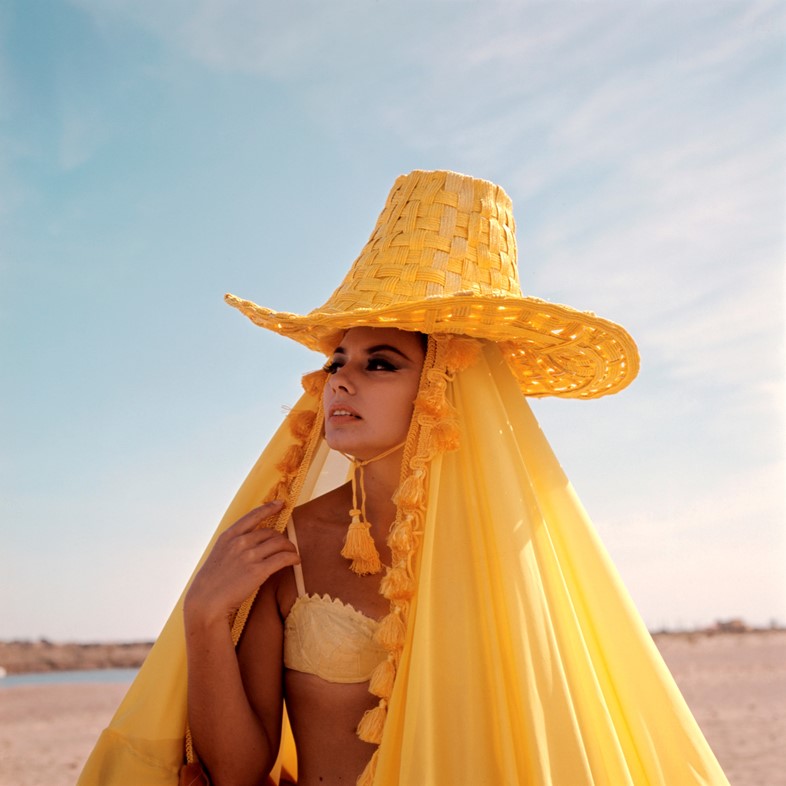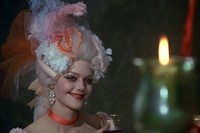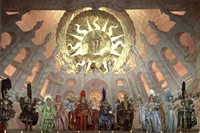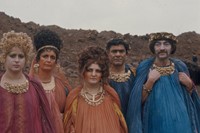As the BFI launches its dedicated Fellini season in celebration of the director’s centenary, we revisit his most sartorially spectacular films
“Don’t forget that costumes, like dreams, are symbolic communication.” So said Federico Fellini, the late, great Italian filmmaker, whose oeuvre evolved from his 1950s ventures in Neorealism (I Vitelloni, La Strada) to his imaginative 1960 opus, La Dolce Vita, and dreamlike masterpiece 8½, before exploding into the realm of flamboyant spectacle in the mid-60s. As his quote suggests, Fellini lent heavily on costume design throughout his career, working with a plethora of abundantly talented designers to create outfits that not only looked remarkable, but also enhanced the narrative of his films.
Much as Fellini’s work has inspired some of the world’s best directors, so his costumes have influenced some of fashion’s greatest minds – from Karl Lagerfeld and Miuccia Prada to Tom Ford and Jeremy Scott – while continuing to delight sartorially minded viewers. Here, as London’s British Film Institute launches a dedicated Fellini season (timed to coincide with the director’s centenary and including the re-release of La Dolce Vita), we look back at five of his most fashionable films, from the supremely seductive to the fabulously frivolous.
1. La Dolce Vita (1960)
La Dolce Vita was the film that put Fellini on the map, earning his costume and set designer, Piero Gherardi, the Oscar for Best Costume Design in the process. A biting study of celebrity in 1960s Rome – then a hotbed of hedonism and glamour thanks to the success of Cinecittà film studios and the international stars it drew to the capital – it follows gossip columnist Marcello Rubini (Marcello Mastroianni) on a futile, week-long search for love and fulfilment on the edges of the spotlight.
Effortlessly suave, Mastroianni sports slim, elegant suits and fitted tuxedos. His crisp shirts boast French cuffs, adorned with sizeable cuff-links; his eyes are shielded by Persol sunglasses: this, we are told, is a man who pays scrupulous attention to detail. Other costume highlights come courtesy of Anouk Aimée, as wealthy playgirl Maddalena, who dazzles in little black dresses and the cat-eye shades that inspired Tom Ford’s similarly up-swept ‘Anouk’ sunglasses. But who can forget Anita Ekberg, as American actor Sylvia Rank, languishing in the Trevi Fountain in that gravity defying black evening gown – surely one of cinema’s most stylishly sensual scenes?
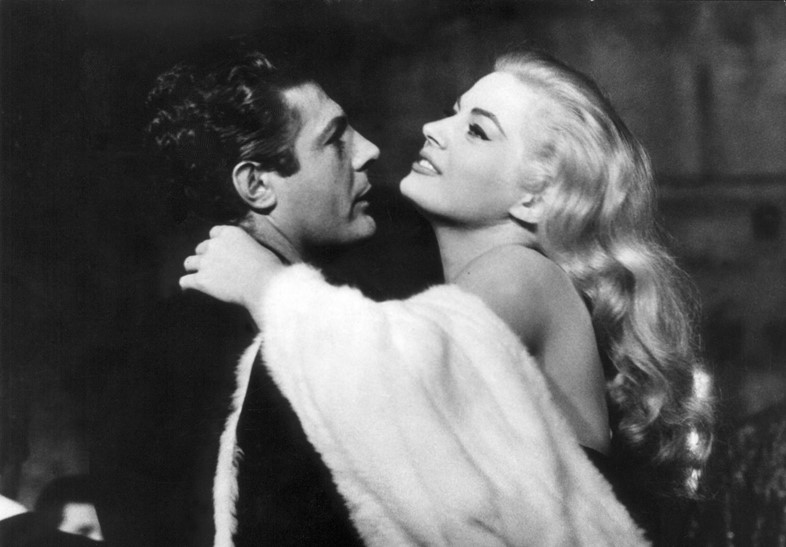
2. 8½ (1963)
Three years on, and Gherardi scooped the Best Costume Design Oscar again, this time for Fellini’s masterful portrait of a filmmaker in crisis, 8½. Again, the film’s protagonist, Guido Anselmi, is played by Mastroianni but here the actor’s clothing is largely immaterial. In this riveting tale of a man torn between past and present, between reality and fantasy, it is the female characters whose clothing captivates.
A varied array of women punctuate the film’s ensemble cast, their costumes serving to accentuate their differences – in age, shape, wealth et cetera. The rich parade of fur stoles, feather boas and pearls, for instance; the eccentric, marvellously elaborate headpieces; while the young don pleated schoolgirl skirts and headbands. The clothing worn by the leading female roles is similarly telling: Guido’s wife, Luisa (Anouk Aimée), appears in chic mod outfits, conveying her demure, assiduous personality while curvaceous sex worker La Saraghina (Eddra Gale) sports a tattered dress and messy beehive symbolising her transversely untamed nature.
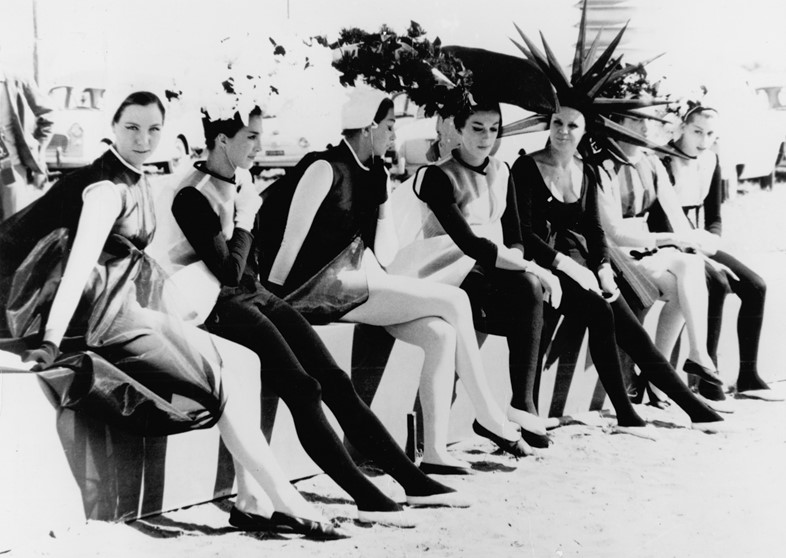
3. Juliet of the Spirits (1965)
Juliet of the Spirits was Fellini’s first foray into colour, and to say the result is eye-popping would be an understatement. Starring Fellini’s spouse Giulietta Masina as “a betrayed wife whose inability to come to terms with reality leads her along a hallucinatory journey of self-discovery” – as the Criterion Collection neatly summarises – the film is a “kaleidoscope of dreams, spirits, and memories”.
Fellini once again collaborated with Gherardi for the film’s sets and costumes, with the exception of the leading lady, whose singularly pared-back wardrobe he himself designed. Gherardi rose to the challenge of Technicolour tailoring with unprecedented gusto, adorning the rest of the cast in ostentatiously oversized picture hats, and swathes of chiffon, tulle ruffles, feathers and silk. The outcome is a riotous feast for the eyes, which playfully caricatures the Italian obsession with fashion. Belgian actress and model Claudie Lange made her cinematic debut with a small, untitled role in the film, which nevertheless proves one of its most striking moments courtesy of her all-yellow beach attire, including a vast straw hat, replete with tasseled veil.
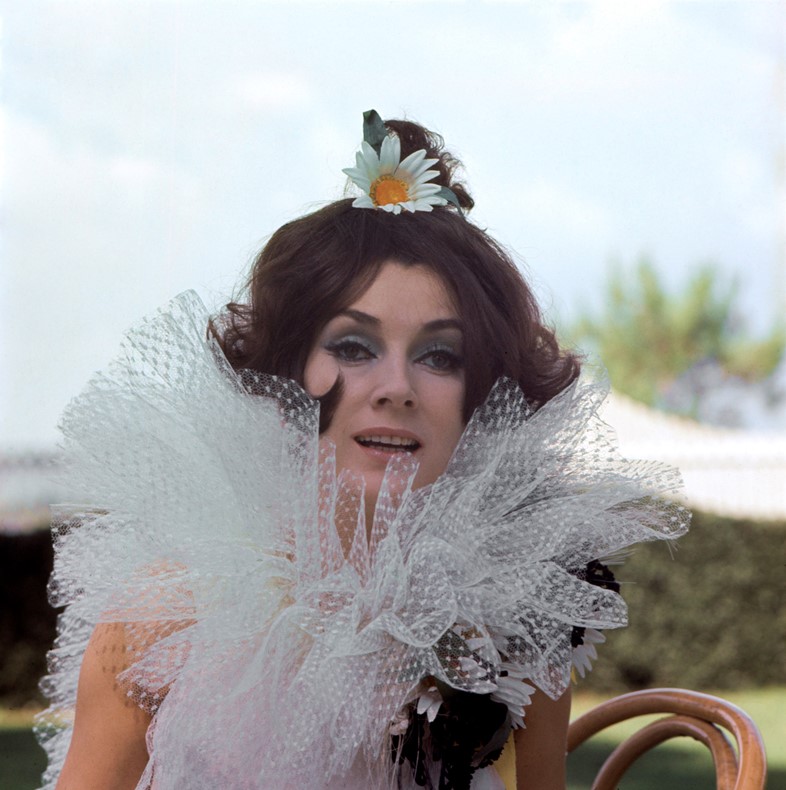
4. Fellini Satyricon (1969)
“Rome. Before Christ. After Fellini.” reads the tagline for Fellini’s loose adaptation of Petronius’ classical Roman satire. And indeed this madcap movie – which the director frequently referred to as a sci-fi film – offers a thoroughly Fellini-ised take on its subject. It is the story of two pansexual young men in ancient Rome, “the handsome scholar Encolpius and his vulgar, insatiably lusty friend Ascyltus,” to cite Criterion again, whom we follow as they navigate “a landscape of free-form pagan excess”.
Satyricon’s breathtakingly intricate set and fanciful costumes – dreamed up by fêted designer Danilo Donati – were Fellini’s most decadent yet. (Dolce & Gabbana confirmed the film’s enduring sartorial influence when they funded its restoration in 2012.) Donati dressed the cast in fabulous coloured classical tunics, spanning cerulean and peach to scarlet and cadmium yellow. The fabrics used were specially treated and pressed with a seven-foot iron to give “the crinkly effect Fellini wanted,” their maker revealed. Statement gold jewellery and gilded hairpieces abound, the latter frequently combined with the traditional Roman piled-curl hairstyle – a look Donati called “the Roman epoch on Mars”. Wild make-up by Piero Tosi, meanwhile, ensured that the actors’ faces remained a focal point no matter how outlandish the scene.
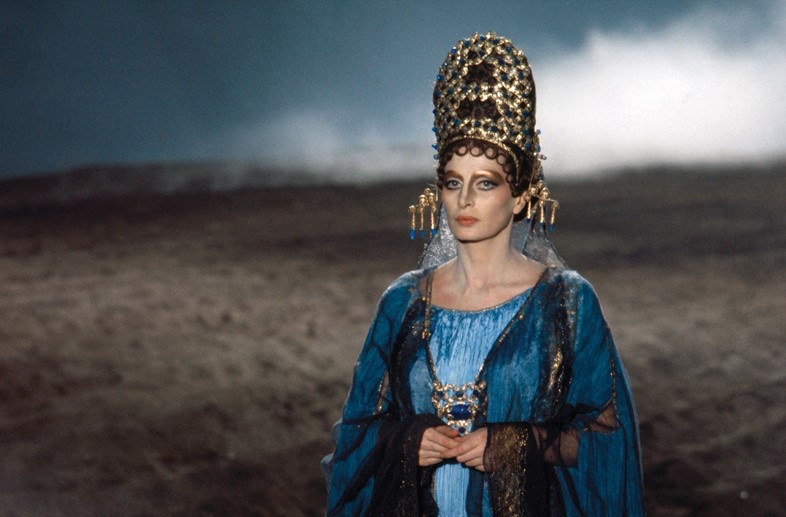
5. Fellini’s Casanova (1976)
Fellini’s Casanova was the director’s 12th and most expensive film. It was shot in Cinecittà studios where the director dreamt up his own version of 18th-century Venice, with extravagant sets and Oscar-winning costumes (courtesy of Danilo Donati). The film is a decidedly grotesque one, which serves to shatter the mythology surrounding the fabled fornicator at its centre.
Fellini transformed his protagonist, played by Donald Sutherland, into what he described as “a sperm-filled waxwork”, cutting off much of his hair, shaving his eyebrows and bestowing him with a false nose and chin. Casanova viewed himself as a great intellect but his ostentatious costumes, including a candle topped headpiece and over-the-knee boots, render him ridiculous. Nevertheless, there’s plenty of inspiration to be gleaned from them, and indeed the rest of the film. The opening carnival panorama features over 600 splendidly adorned extras, from nuns in red velvet to prelates in high heels, while in the pastel-hued court scenes lace, velvet and ruching dominate. These ornate looks famously inspired Karl Lagerfeld’s celebrated Casanova-themed collection for Chloé in 1977, filled as it was with voluminous silhouettes, chiffon dresses and lace appliqué.
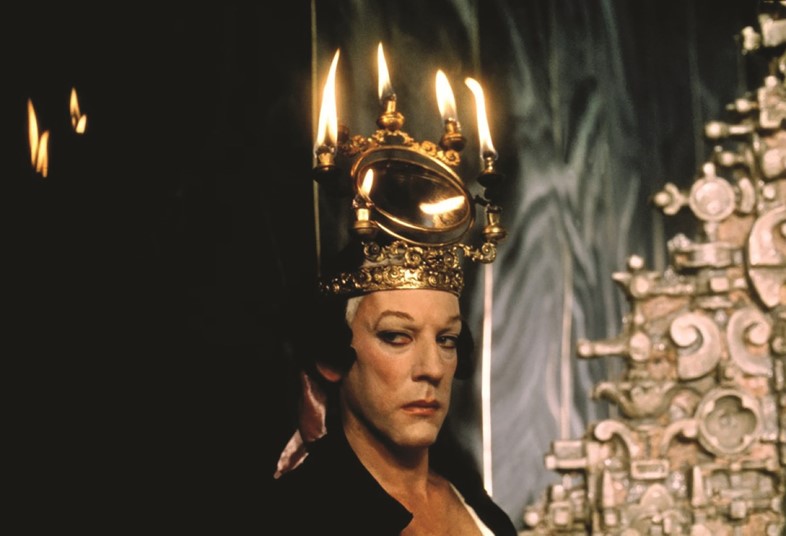
The BFI’s Fellini season runs throughout January and February 2020.
